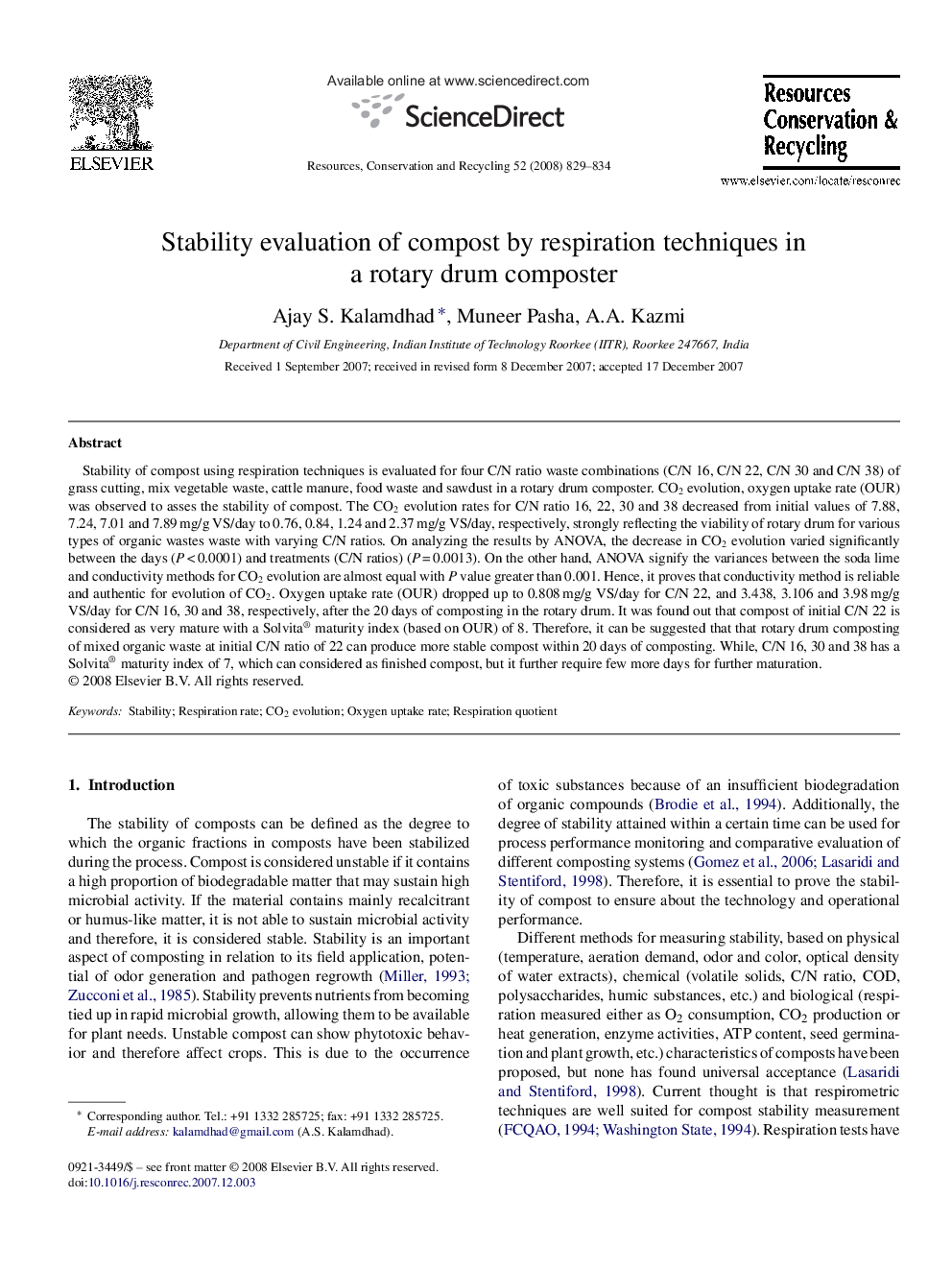| Article ID | Journal | Published Year | Pages | File Type |
|---|---|---|---|---|
| 1064255 | Resources, Conservation and Recycling | 2008 | 6 Pages |
Stability of compost using respiration techniques is evaluated for four C/N ratio waste combinations (C/N 16, C/N 22, C/N 30 and C/N 38) of grass cutting, mix vegetable waste, cattle manure, food waste and sawdust in a rotary drum composter. CO2 evolution, oxygen uptake rate (OUR) was observed to asses the stability of compost. The CO2 evolution rates for C/N ratio 16, 22, 30 and 38 decreased from initial values of 7.88, 7.24, 7.01 and 7.89 mg/g VS/day to 0.76, 0.84, 1.24 and 2.37 mg/g VS/day, respectively, strongly reflecting the viability of rotary drum for various types of organic wastes waste with varying C/N ratios. On analyzing the results by ANOVA, the decrease in CO2 evolution varied significantly between the days (P < 0.0001) and treatments (C/N ratios) (P = 0.0013). On the other hand, ANOVA signify the variances between the soda lime and conductivity methods for CO2 evolution are almost equal with P value greater than 0.001. Hence, it proves that conductivity method is reliable and authentic for evolution of CO2. Oxygen uptake rate (OUR) dropped up to 0.808 mg/g VS/day for C/N 22, and 3.438, 3.106 and 3.98 mg/g VS/day for C/N 16, 30 and 38, respectively, after the 20 days of composting in the rotary drum. It was found out that compost of initial C/N 22 is considered as very mature with a Solvita® maturity index (based on OUR) of 8. Therefore, it can be suggested that that rotary drum composting of mixed organic waste at initial C/N ratio of 22 can produce more stable compost within 20 days of composting. While, C/N 16, 30 and 38 has a Solvita® maturity index of 7, which can considered as finished compost, but it further require few more days for further maturation.
